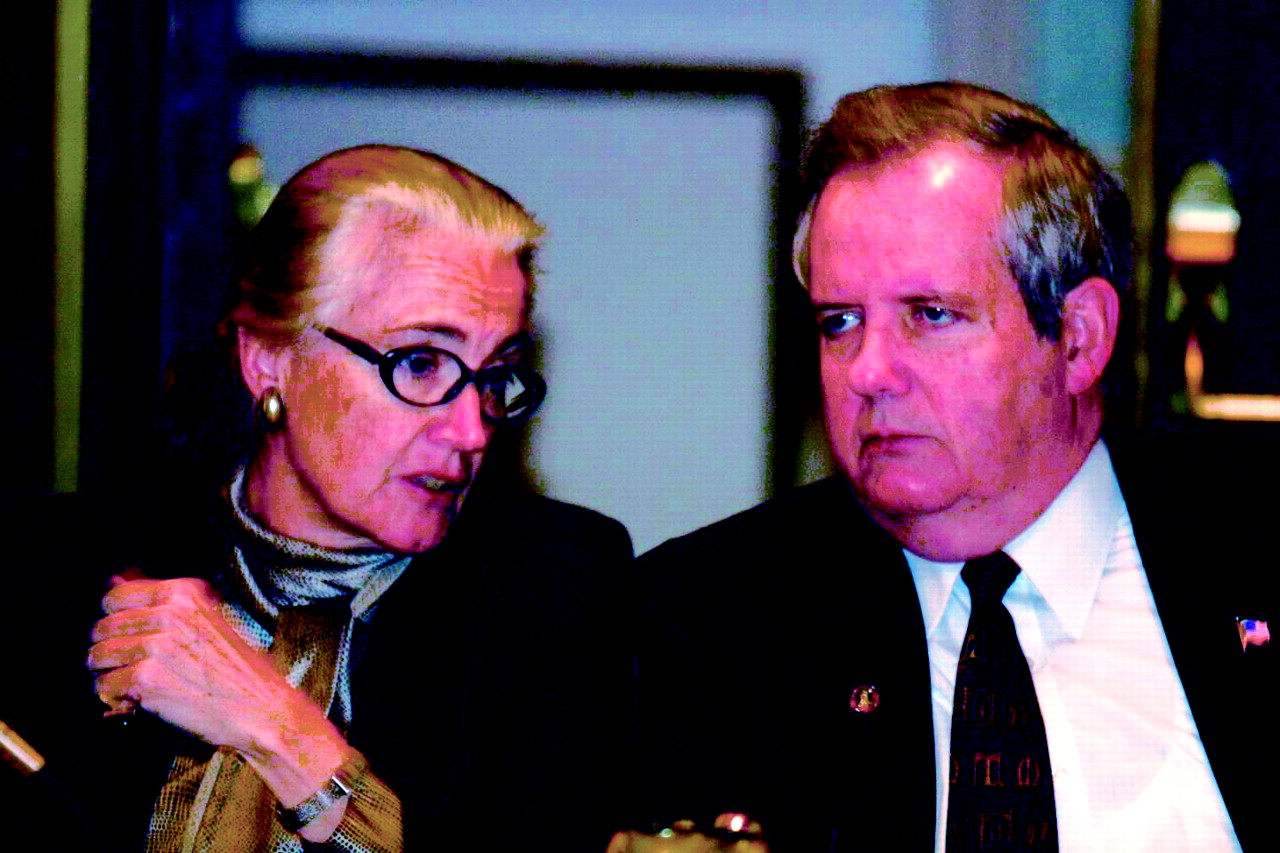A AP has revised its practice guideline on bipolar disorder guideline. It was first approved by APA’s Assembly last November and then by the Board of Trustees last December.
“I’m very pleased about it,” John McIntyre, M.D., chair of APA’s Steering Committee on Practice Guidelines and a past APA president, told
Psychiatric News. “True, the original bipolar disorder practice guideline, which was published in 1994, was excellent. But there have been a lot of new developments in bipolar disorder treatment since then. And because treatment can markedly decrease the morbidity and mortality associated with this severe disorder, the time had come for a revision—in other words, for an update of an already good product.”
How does the revised guideline differ from the original one? Medications that were not available or authorized for use in treating bipolar disorder before, but which during the past few years have been shown to be effective for it, are now referred to in the revised guideline, McIntyre said. For example, as Roy Perlis, M.D., an instructor in psychiatry at Harvard Medical School and a consultant to the work group that put the revised guideline together, pointed out: “The new guideline incorporates emerging data on newer anticonvulsants and atypical antipsychotics and tries to indicate where they might fit in our treatment decision making.”
Robert Hirschfeld, M.D., of the University of Texas Medical Branch at Galveston and chair of the work group, offered this observation: “We now have treatments for bipolar depression, where in the past there had been very little. We now have a whole new class of agents, the atypical antipsychotics, to treat acute mania.”
Still another way the new guideline differs from the old one, Perlis explained, is that the work group “decided to omit the term ‘mood stabilizer’ entirely, since the definition often varies depending on who’s using the term. Instead, we simply refer to drugs as being effective in particular phases of treatment.”
Yet another difference between the revised guideline and its predecessor is that the revision pays increased attention to comorbidity in bipolar illness, especially substance-abuse comorbidity, McIntyre said.
Parts of the new guideline that will be especially helpful to psychiatrists, McIntyre anticipates, are the sections on psychiatric management and those having to do with issues of continuing treatment and maintenance therapy. “Because bipolar disorder is a chronic illness, issues about maintenance therapy are very important,” he stressed.
“As with all the practice guidelines, I think the new bipolar one will give practicing psychiatrists the opportunity to readily review the current state of evidence on treatment approaches and to integrate recent findings into their day-to-day practices with individual patients,” said Laura Fochtmann, M.D., APA’s medical editor of practice guidelines.
The new bipolar disorder practice guideline is divided into three parts.
Part A contains the treatment recommendations for patients with bipolar disorder. Within that part, Section I summarizes treatment recommendations, which include the main treatment recommendations along with codes that indicate the degree of clinical confidence in each recommendation.
Section II is a guide to formulating and implementing a treatment plan for the individual patient. This section includes all of the treatment recommendations.
Section III, “Special Features Influencing the Treatment Plan,” discusses a range of clinical considerations that could alter the general recommendations discussed in Section II.
Part B, “Background Information and Review of Available Evidence,” will be useful to understanding in detail the evidence underlying the treatment recommendations of Part A.
Within Part B, Section IV provides an overview of bipolar criteria in DSM-IV, features of bipolar disorder, and general information on the natural history and course of bipolar disorder. Section V is a structured review and synthesis of published literature regarding the available treatments for bipolar disorder. Because of the paucity of published data on important clinical questions, the results of unpublished studies or those in press were also reviewed and included, although the work group gave them considerably less weight than they did the published studies.
Part C, titled “Future Research Needs,” draws from the previous sections to describe areas in which better research data are needed to guide clinical decisions. And several pressing questions still need to be addressed, Perlis told Psychiatric News. Among them:
• How soon should psychiatrists add an antidepressant to a bipolar patient’s treatment, and what constitutes an adequate clinical trial?
• What should psychiatrists do when their first-line treatments fail? There are currently few data about “next-step interventions,” Perlis said.
• Are there differences in optimal treatment for bipolar I, bipolar II, and other bipolar-spectrum illnesses? “Many studies fail to distinguish between the various groups or include only bipolar I patients,” Perlis said.
Work on revising the guideline started two and a half years ago. About 800 people from all aspects of psychiatry have been involved from start to finish. “At each step of the guideline-review process we received feedback, then integrated those comments into the next draft,” Fochtmann explained. “For example, the final version—the one approved by the Board in December—included some modifications made on the basis of input from Assembly members after their meeting in November.”
Now that the revised bipolar disorder practice guideline has been approved by the Board, it will go to American Psychiatric Publishing Inc. for editorial proofreading and then will be published as a supplement to the American Journal of Psychiatry, as have previous guidelines. It will also go into the practice-guideline compendium, which will be available at APA’s annual meeting in Philadelphia in May. ▪

